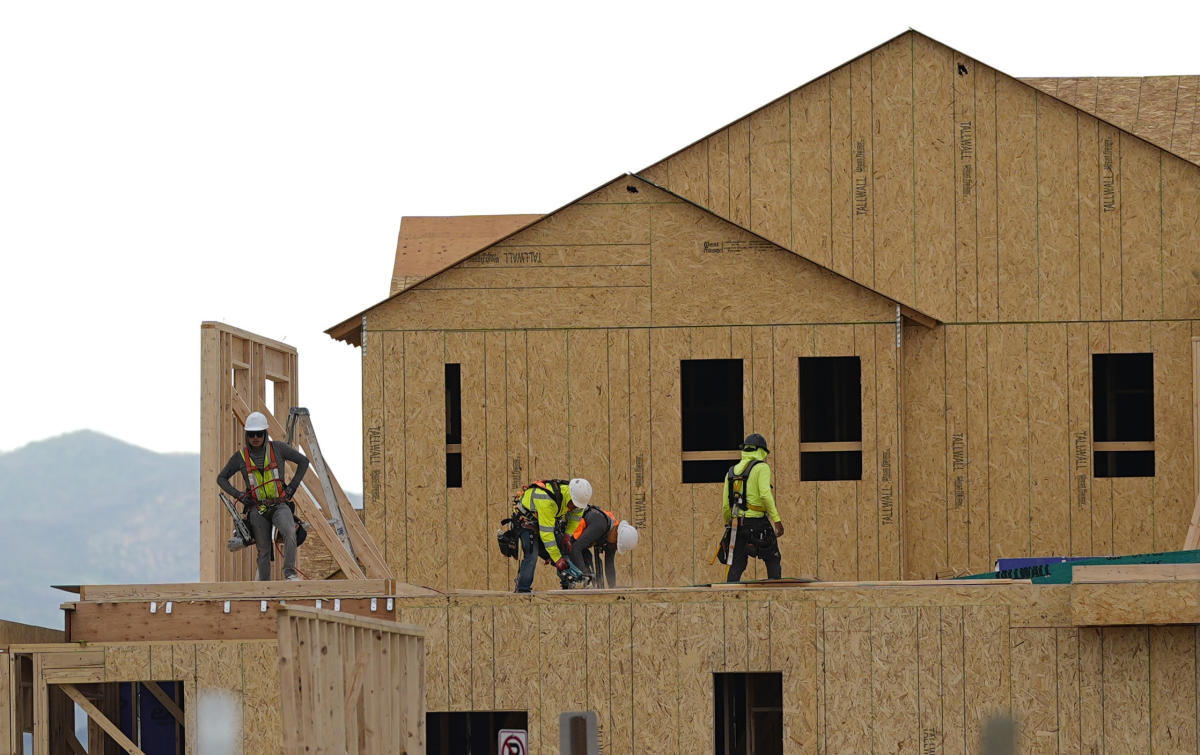Bussiness
Average rate on a 30-year mortgage falls slightly, easing borrowing costs for home shoppers

LOS ANGELES (AP) — The average rate on a 30-year mortgage fell slightly this week, providing modest relief for home shoppers facing record-high home prices.
The rate fell to 6.89% from 6.95% last week, mortgage buyer Freddie Mac said Thursday. A year ago, it averaged 6.96%.
The average rate has mostly hovered around 7% this year — more than double what it was just three years ago. The elevated mortgage rates, which can add hundreds of dollars a month in costs for borrowers, have put off many home shoppers this year, extending the nation’s housing slump into its third year.
Borrowing costs on 15-year fixed-rate mortgages, popular with homeowners refinancing their home loans, also fell this week, pulling the average rate down to 6.17% from 6.25% last week. A year ago, it averaged 6.30%, Freddie Mac said.
Mortgage rates are influenced by several factors, including how the bond market reacts to the Federal Reserve’s interest-rate policy and the moves in the 10-year Treasury yield, which lenders use as a guide for pricing home loans.
The yield, which topped 4.7% in late April, has been generally declining since then on hopes that inflation is slowing enough to get the Fed to lower its main interest rate from the highest level in more than two decades.
“Following June’s jobs report, which showed a cooling labor market, the 10-year Treasury yield decreased this week and mortgage rates followed suit,” said Sam Khater, Freddie Mac’s chief economist.
On Thursday, the yield was down to 4.18% in midday trading in the bond market after a new update on inflation raised expectations that the central bank will soon begin lowering its benchmark rate.
Fed officials have said that while inflation has moved closer to the central bank’s target level of 2% in recent months, they want to see more data supporting that trend before moving to cut rates.
Most economists expect the Fed’s first rate cut to come in September, with potentially another cut by year’s end.
Until the Fed begins lowering its short-term rate, long-term home loans are unlikely to budge significantly from where they are now. Still, mortgage rates could generally ease in coming weeks if bond yields continue declining in anticipation of a Fed rate cut.
“Although volatile, we should see 10-year Treasury rates continue on a downward trend and, as a result, a slow decline in mortgage rates throughout the rest of the year,” said Ralph McLaughlin, senior economist at Realtor.com.
Record-high home prices and a rising, but still historically limited, supply of properties on the market discouraged many would-be homebuyers this spring, traditionally the busiest period of the year for the housing market.
Sales of previously occupied U.S. homes fell in May for the third month in a row, and indications are that June saw a pullback as well.
Despite forecasts calling for mortgage rates to ease in coming months, most economists expect the average rate on a 30-year home loan to remain above 6% this year. That may not be enough of a decline to entice home shoppers who have been holding out for mortgage rates to come down, nor persuade homeowners who have locked in rock-bottom rates that it’s a good time to sell.
“There are definitely some people I’m working with that are considering waiting till next year,” said Dane Gates, broker associate with Better Homes and Gardens Real Estate in Houston.







:max_bytes(150000):strip_icc()/roundup-writereditor-loved-deals-tout-f5de51f85de145b2b1eb99cdb7b6cb84.jpg)


